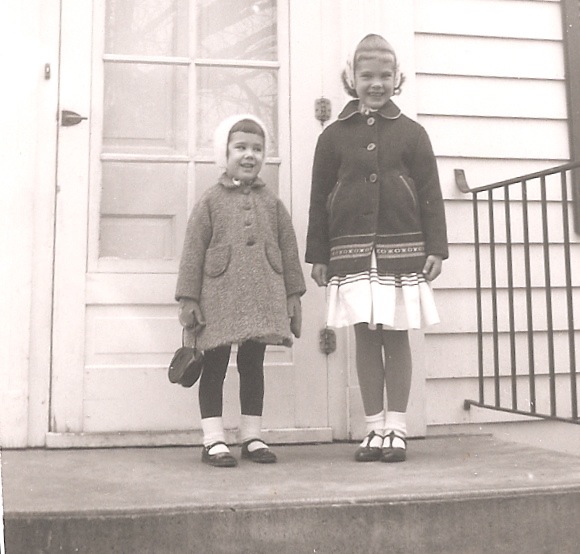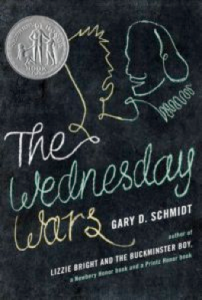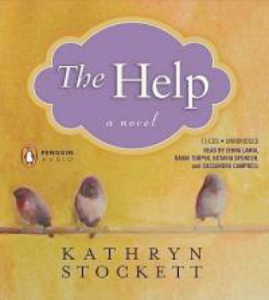
by jphilo | Apr 18, 2014 | Reflections on the Past

Comfortable and casual as our lives are now,
When Easter rolls around,
With barely a nod to Palm Sunday,
Maundy Thursday,
and Good Friday,
I wish for more.
I wish for fish on the school lunch menu every Friday during Lent,
For a Holy Week marked by children waving palm fronds on Sunday,
For hushed and humble communion on Maundy Thursday evening,
For no school on Good Friday,
For Saturday evening watching Lawrence Welk while Mom puts curlers in my hair,
For fitful sleep in my beauty crown of thorns,
For hunting eggs on Sunday morning.
I wish for the struggle of pulling on tights and a itchy petticoat,
For anklets and Mary Janes on my feet,
For getting tangled in a new dress,
For Mom combing my feeble curls,
For the glory of an Easter hat and gloves,
For a dime tied in a hankie and tucked in my purse,
Ready for the offering plate.
I wish I could go to church with my family,
Scratch where the petticoat tickles my waist,
Gaze at the stained glass windows and
Wonder if Jesus’ brilliant white robes were itchy, too,
Stand when the organ music swells us to our feet,
And with a child’s untested perfect faith sing,
Christ the Lord Is risen today,
Alleluia!
Those Easter bonnet days are fifty years gone,
But the child within me still lives,
And my faith,
Now tested and imperfect,
Now internal and personal,
Rather than external and tradition,
Lives as well.
Clothed in Christ,
I stand and sing
To the timeless God who wore a crown of thorns,
Who bore my sins on the cross,
Who died so I might live,
Jesus, the Son of God, is risen
Today,
Yesterday,
Fifty years ago,
And forever.
Alleluia!

by jphilo | Feb 18, 2011 | Reviews

When teachers or former students and their parents ask if I miss teaching, my answer often disappoints them. After twenty-five years of rigid schedules, grading, report cards, school politics, recess duty, teacher evaluations, curriculum writing, and inhaling every virus trapped in stale, classroom air, it was time for a new adventure.
But, there are a few things I miss – creating a community of trust in the classroom, being allowed into a nine-year-old’s world, and reassuring parents of a child’s worth and ability. I also miss staying abreast of developments in the rich world of children and young literature. That’s hard to do without the recommendations of a classroom full of kids and the school librarian to point me to the best and brightest new writing each year.
Once the first draft of my new book was complete, the itch to read kid and young adult lit began. But I didn’t know where to start until my friend Katie Wetherbee of Key Ministries suggested The Wednesday Wars.
“It’s fantastic,” she said. “You have to read it,” she said. So I did. And she was right.
The book is a gem, which is no surprise to those who follow it’s author, Gary Schmidt. He’s written three other books, Anson’s Way, Straw Into Gold, and Lizzie Bright and the Buckminster Boy, a Newberry Honor Book. After reading The Wednesday Wars, they’re all on my must read list.
Why? Because Schmidt wove a rich tapestry from the staples of middle childhood – friendship, rejection, school, baseball, cynical older sisters, teachers, parents, the realizations that adults are frail humans and that all issues are not black and white – and the unexpected elements of Shakespeare, pet rats, cream puffs, cross country running, and architecture. He deftly fit unlikely components together, thanks to generous amounts of humor and a realistic 1967 story world, complete with an appearance by Mickey Mantle and news reports about Viet Nam, the deaths of Martin Luther King, Jr. and Bobby Kennedy.
Revealing more about the plot would ruin the story for those of you who haven’t read it. Instead, meet two of the main characters. The first is seventh grade nerd, Holling Hoodhood. With a name like that, could he not be a nerd? The second is Mrs. Baker, a precise and demanding teacher. She is also Holling’s nemesis in his Wednesday afternoon wars.
For fear of spoiling the fun and the poignancy of The Wednesday Wars, I won’t say anymore. Except for this. Thank you, Katie Wetherbee, for recommending The Wednesday Wars.

by jphilo | May 28, 2010 | Reflections on the Past

My speaking engagements earlier this week took me out of town for less than 24 hours. But the time away resulted in a wink from God and a blast from the past. The blast from the past came during morning exercise time after my overnight stay. I flipped through the TV channels, looking for something to distract me from the pain and boredom that accompanies the stretching the kinks in these old muscles. When strains of the Mr. Ed theme song began, minus the lyrics, I quit channel surfing.
But why wasn’t anyone singing the lyrics (which practically every child who attended elementary school in the 1960s knows by heart) along the sit com’s perky little melody?
Because, as the first scene revealed, this was the first episode of the entire series. The lyrics would have given away the show’s hilarious premise – unsuspecting, newlywed couple buys a new house complete with a talking horse, who only talks when the husband is around.
Boy oh boy, this history lover was in for a pop history lesson!
However, my childlike enthusiasm was short-lived. My fifty-three-year-old sensibilities were not nearly as impressed by the show’s hilarious premise as my eight-year-old self had been. By the first commercial break, I understood why my parents hated the show and added a few of my own reasons:
- Displays of tame, natural affection between newlyweds were interpreted by other characters as shameful.
- The wife was portrayed as only concerned about making a good impression and going to parties.
- The husband was portrayed as really stupid.
- The smartest character in the show was the horse, but he was nasty smart.
- Every character in the show (including Mr. Ed) was totally self-absorbed.
The only redeeming feature of the show was Wilbur’s safety tip about not leaving a garden rake lying on the ground. He explained to his wife how someone could step on the rake head which would cause the handle to fly up and bonk the unsuspecting passerby in the face. Of course, the pretty little wife then asked, “You mean like this?” and the rake flew up and bonked Wilbur on the head. The gag was absolutely necessary to the intricate plot because the head bonk explained why Wilbur was seeing things – like a talking horse. Silly guy!
Anyway, I remember how Wilbur’s safety tip and lawn accident transformed my life. For several years, any yard I entered required a thorough scoping in case any renegade rakes were lying in wait. I found several, but thanks to Wilbur’s advice, I never experienced a head bonk. So I never discovered a talking horse which made everyone think was crazy, which was a good thing because being a dreamy, goofy kid I didn’t need any fuel added to that fire.
Even though that safety tip changed the course of my life, I can’t get sentimental about Mr. Ed. It’s about the dumbest TV show ever created, unless you’re eight years old, in which case it’s transformational.
Some days, being fifty-three is wonderful.

by jphilo | May 29, 2009 | Reviews

My favorite books are the ones where the characters are genuine, the plot compelling and not totally predictable, the story world so vivid I enter it, and the issues raised so realistically presented that I think about them long after finishing the book.
The Help did all those things. Stockett brings the the era to life, and the depth of her research is obvious. So many little touches, like a TV commercial sponsored by the US Postal Service urging watchers to include the five number zip, zip, zippy, zip code when addressing mail, adds authenticity to the book. (The fact that I remember watching those commercials as a child makes me feel old, but I’ve forgiven Stockett for the indignity.)
The author exposes the evils of the early 1960s Jim Crow south without sugar-coating. She weaves historical events such as the assassination of Medgar Evans and Martin Luther King’s March on Washington into the plot without making all whites evil and all black people saints. Kathryn Stockett’s heroines weren’t completely good and her villains weren’t completely evil. They were real people making real choices – some good, some bad, some totally unexpected – in the complex and changing world of 1960’s Jacksonville, Mississippi.
Perhaps the best thing I can say about this book is that I didn’t want it to end. Stockett did what the authors of Peace Like a River and Water for Elephants also did for me. She created characters I could befriend. And when I turned to the last page, I was sad to say good-bye to Miss Sketter, Aibilene and Minnie, the three women who told their stories in The Help.
You really should meet them. You’ll be glad you did.





